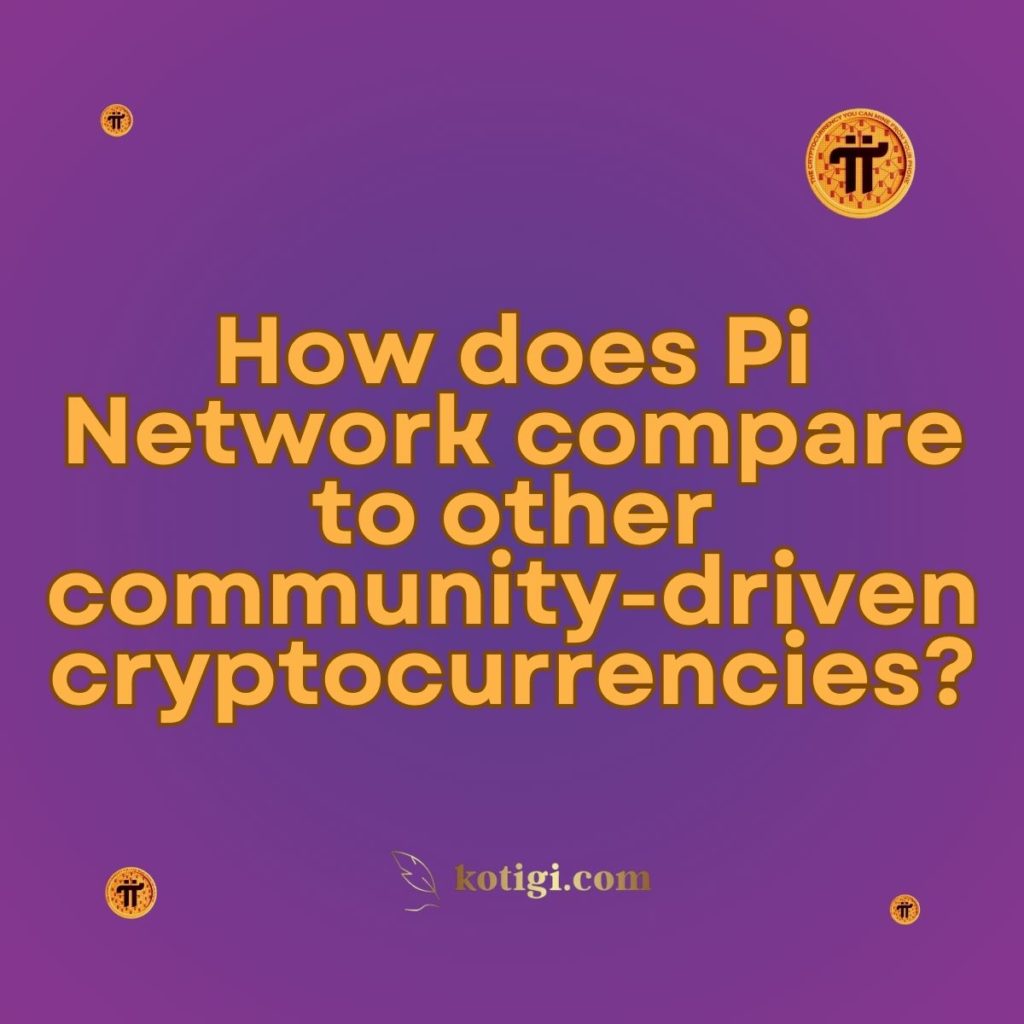
How does Pi Network compare to other community-driven cryptocurrencies?
Pi Network stands out among community-driven cryptocurrencies due to its unique approach to accessibility, sustainability, and community engagement. While there are several similarities with other community-driven projects, Pi Network offers distinct advantages and characteristics that set it apart. Here’s a comparison of Pi Network with other community-driven cryptocurrencies:
1. Accessibility and Ease of Use
1.1. Mobile-Friendly Mining:
One of Pi Network’s most significant differentiators is its mobile-friendly mining process. Unlike many other cryptocurrencies that require specialized hardware (like GPUs or ASICs) to mine, Pi Network allows users to mine Pi coins directly from their smartphones. This accessibility makes Pi Network more inclusive, as anyone with a smartphone can participate, regardless of technical expertise or financial resources.
1.2. Low Energy Consumption:
Pi Network’s mining process is designed to be energy-efficient, unlike traditional cryptocurrencies like Bitcoin, which require substantial computational power and energy. This focus on sustainability is appealing to users who are environmentally conscious and prefer a low-impact method of participating in the crypto space.
2. Community Engagement and Growth
2.1. Strong Referral System:
Pi Network uses a robust referral system to grow its user base. Users are incentivized to invite others to join, which not only expands the network but also fosters a sense of community. This referral-based growth model is effective in building a large and engaged user base quickly, which is essential for the network’s success.
2.2. Active Community Participation:
Similar to other community-driven cryptocurrencies like Dogecoin or Shiba Inu, Pi Network relies heavily on its community for growth and development. However, Pi Network emphasizes more structured and purposeful engagement, with users actively participating in the network’s development through feedback, testing, and community events. This structured approach helps maintain a focused and goal-oriented community.
3. Development and Future Potential
3.1. Vision for Decentralized Applications (dApps):
Pi Network has a clear roadmap for developing a decentralized ecosystem, including support for dApps. This vision aligns with other community-driven projects like Ethereum, which also focus on creating a platform for decentralized applications. However, Pi Network’s approach is more community-centric, aiming to involve its users directly in the development and use of these applications.
3.2. Gradual Decentralization:
While Pi Network is still in the process of transitioning to full decentralization, its plan involves careful and measured steps to ensure security and stability. This contrasts with some other community-driven projects that prioritize rapid decentralization, sometimes at the expense of security or usability. Pi Network’s methodical approach may offer a more stable and secure environment for users.
4. Security and Trust
4.1. Focus on User Security:
Pi Network places a strong emphasis on user security and privacy, incorporating blockchain technology to secure transactions and user data. While other community-driven cryptocurrencies also focus on security, Pi Network’s emphasis on creating a secure mobile mining experience is particularly noteworthy.
4.2. Community-Based Security:
In addition to technical security measures, Pi Network also relies on its community to help maintain the network’s integrity. Users can participate in running nodes and verifying transactions, contributing to the network’s overall security. This community-based approach is similar to other decentralized projects but is more accessible due to Pi Network’s mobile-first design.
5. Market Presence and Adoption
5.1. Pre-Mainnet Phase:
Unlike many other community-driven cryptocurrencies that are already listed on exchanges and have a market value, Pi Network is still in its pre-mainnet phase. This means that Pi coins cannot yet be traded on traditional cryptocurrency exchanges. This stage of development is unique and positions Pi Network as a long-term project with a focus on building a strong foundation before launching on the open market.
5.2. Adoption Strategy:
Pi Network’s adoption strategy involves building a large, engaged user base before launching on the mainnet. This approach contrasts with the strategies of some other cryptocurrencies that aim for rapid adoption and listing on exchanges. Pi Network’s focus on organic growth and community involvement may lead to a more stable and sustainable adoption in the long term.
Conclusion
Pi Network compares favorably to other community-driven cryptocurrencies due to its focus on accessibility, sustainability, and community engagement. Its mobile-friendly mining process, strong referral system, and methodical approach to decentralization set it apart from other projects. While still in its early stages, Pi Network’s emphasis on building a secure and engaged community positions it as a unique and potentially impactful player in the cryptocurrency space. As it continues to develop, Pi Network could offer a compelling alternative to other community-driven cryptocurrencies, particularly for users seeking an inclusive and user-friendly experience.





